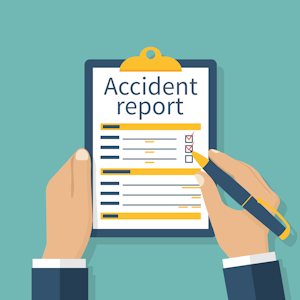Alberta OHS Changes: What you need to know about the new OHS regulations implemented on June 1st, 2018.
A Bit of History

Occupational health and safety standards in Canada can be traced back to 1886. This was the year that Ontario introduced the first Workmen’s Compensation for Injuries Act. Up until this point, employers were not held responsible for the care or compensation of workers injured on the job. This act established safety standards that would later lead to a federal system for workers’ protection – the Association of Workers’ Compensation Boards of Canada. In 1976, Alberta implemented Canada’s first comprehensive Occupational Health and Safety Act (OHS). It came after years of union campaigning and provided a framework for other provinces to make their own.
Time for an Update

As you’ve probably heard, the OHS Act has been updated as of June 1, 2018. These recent changes came after the first intensive review of this legislation since its inception over 40 years ago. These changes are meant to modernize the act for continued protection in the current workplace.
In this article you’ll get a run down on the important changes you need to know about as a business owner or if you work in HSE or HR. In a later article we’ll go into more detail about the specific requirement of a health and safety program now required for employers with over 20 employees. If you can’t wait for that article and this change affects you, don’t panic. You can always give our experts a call. We have ample experience in the effective implementation of safety management systems. But right now is a great time to learn about these new updates and find out if they apply to you.
The most Important changes that you need to know about

The OHS Act outlines the rights and responsibilities of all worksite parties including government and legislative bodies.
The updates are a big step for OHS in Alberta as many of the changes are long overdue. This also means that many changes are being implemented all at the same time
All 92 pages of the most recently updated version of the Alberta Occupational Health and Safety Act are available online. We’ve summarized the top seven changes that may apply to you and your business from this legislation. They include:
1. worker’s rights,
2. worksite party’s responsibilities,
3. health and safety committees,
4. harassment and violence prevention plans,
5. health and safety programs,
6. reporting, and
7. compliance/enforcement.
1. Worker’s Rights

Under the new act, everyone has the right to the following:
· A right to know: all potential health and safety hazards must be disclosed to participants on a work site.
· A right to refuse unsafe work: Workers can refuse to do dangerous work without fear of reprisal for exercising this right.
· A right to participate: work site health and safety committee participation is open to workers.
2. Work Site Parties Updated Responsibilities

Before, the OHS Act didn’t get into the specifics of workplace responsibilities. Now, each person has a clearly outlined role. Roles are designed to create accountability between all parties.
For example:
Employers are responsible for the safety of workers. They must inform the workers of their rights, duties and any safety concerns. Employers must cooperate with the joint work site health and safety committee or representatives to ensure public safety and prevent violence or harassment.
All delegations including employers, supervisors, workers, contractors, owners, prime contractors, suppliers, service providers, self-employed persons, and temporary staffing agencies are outlined in the Alberta Occupational Health and Safety Act, Regulation, and Code.
These parties work together to create a transparent and cooperative atmosphere. A good example of cooperation is the responsibility of worksite parties to share all hazard information with one another. This helps support the fundamental principle of the right to know.
3. Mandatory Health and Safety Committees/Representatives

Whether it’s a small business or a large one, all Alberta employers must have some form of health and safety appointee. For employers with 20 or more employees, a joint work site health and safety committee (JWHSC) must be formed for work lasting more than 90 days. The JWHSC role is to discuss and provide support for health a safety initiatives. It’s made up of at least five people and half of them are appointed by the workers, half of them are appointed by the employer.
For smaller employers, with 5 to 19 employees on a worksite, a health and safety representative (HSR) is needed. The HSR performs many of the same functions as the JWHSC but operates as a sole individual. Regular meetings must take place where representatives discuss ongoing safety issues and concerns.
They help with work site inspections, incident investigations, and work refusals. The workers or the union pick the HSR but the employer has an obligation to provide positional training.
Employers must determine how often safety meetings with the HSR will take place. These meetings among other HSR duties must be carried out during normal working hours.
4. Updated Harassment and Violence Prevention Plans

Harassment and workplace violence are now clearly defined in the OHS amendments. It is the explicit responsibility of the employer to prevent harassment and violence through direct action or appointment of a competent supervisor.
Prevention policies must be implemented through consultation with JWHSC or HSR. They must be reviewed every three years and include privacy, investigation, reporting, and corrective action procedures.
5. Required Health and Safety Program: 10 Elements

The new act requires employers with 20 or more workers to establish a health and safety program. A health and safety program is defined in the OHS Act as “a coordinated system of procedures, processes and other measures implemented by an organization to promote continuous improvement in occupational health and safety.” This program includes 10 mandatory elements and must be reviewed at least every three years.
Here are the 10 elements:
1. A health and safety policy
2. A hazard assessment
3. An emergency response plan
4. Statement of OHS responsibilities of the employer, supervisors, and worker at the work site
5. Worksite inspections: schedule and procedures
6. Procedures for another employer to work at work site.
7. Health and safety orientation and training for workers and supervisors
8. Procedures for investigating incidents, injuries and refusals to work
9. Procedures for worker participation in work site health and safety
10. Procedures for reviewing and revising the OHS program.
If you have 20 or more employees in your company, it is likely that you now must have a safety management program. Creating or updating a program can seem like a daunting task. However, we can help. The experts at Safety Coordination Services have years of experience in developing Safety and Loss Control Management Systems. We partner with small businesses and enterprise level organizations alike to create tailor made safety programs. These programs consistently meet or exceed the requirements of OHS or other applicable standards organizations. Contact us for more information about our services.
6. Reporting Injuries, incidents and fatalities

All incidents and potentially serious near misses must be reported to the OHS contact center at 1-866-415-8690 (780-415-8690 in Edmonton). The old OHS act specified that serious injuries only had to be reported once a subject was in the hospital for two days. Now, any incident resulting in a hospital visit must be reported.
Near misses had to be investigated under the old legislation, but reporting was not mandatory. The current act requires employers to report all potentially serious near misses. This can be done online using the PSI Online Reporting Service.
7. Compliance and Enforcement Changes

Before, OHS officers had the authority to enter any worksite without consent or warrant. Now, they must get the owner’s consent or obtain a court warrant to enter a private dwelling.
These new limitations to the OHS officer’s power come with enhanced investigative capabilities. They now have the authority to interview anyone who might have relevant information when performing an investigation — even if that person was not at the worksite.
Moving into the Future

As the government updates our labour laws, we want to make sure you have the resources to successfully respond. For more details on the changes to the OHS Act, visit the Government of Alberta’s website. You will find plenty of information regarding worker’s rights, worksite party’s responsibilities, health and safety committees, harassment and violence prevention plans, health and safety programs, reporting, and compliance/enforcement.
Watch for a later article about creating and implementing safety management systems. We will dive into the specifics of each mandated element and the steps to ensure that your program is up to code.
If you would like more information on how the OHS updates affect your company, please do not hesitate to contact SCS at (780)-485-3585. We understand that implementing or updating a safety program can feel overwhelming. That is why we are committed to providing straightforward and quality services.
